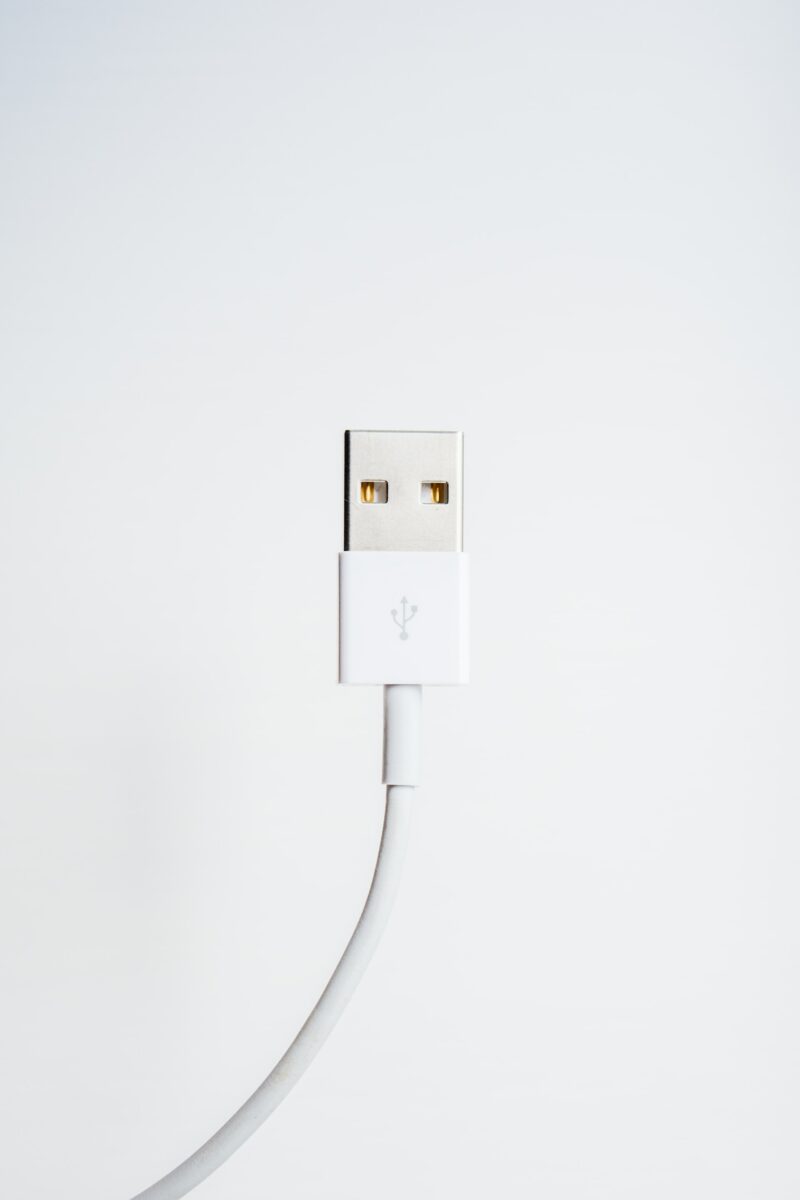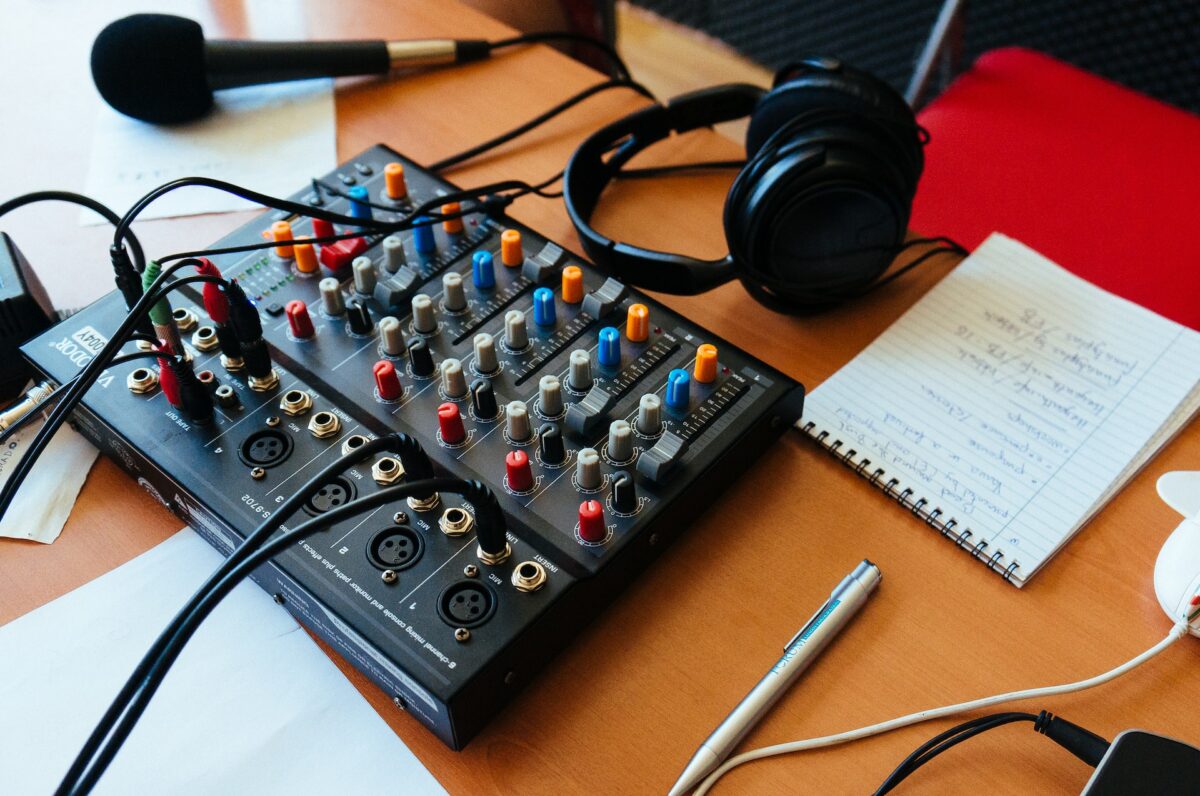Are your AirPods not working properly? It can be frustrating when you’re trying to listen to your favorite music or take an important call, only to find that one or both of your AirPods are not functioning correctly and you don’t exactly know how to fix AirPods. But don’t worry, fixing your AirPods is easier than you might think.
One of the most common issues with AirPods is that one or both of them may not be working. This could be due to a variety of reasons, such as low battery, connectivity issues, or hardware malfunction.
Fortunately, there are several steps you can take to troubleshoot and fix the problem. In this article, we’ll walk you through some of the most common AirPods issues and provide step-by-step instructions on how to fix them.
Table of Contents
ToggleHow To Clean Your AirPods
Keeping your AirPods clean is important for both hygiene and sound quality. Over time, they can accumulate earwax and debris, which can affect their performance.
Here’s how to clean your AirPods properly:
- Remove ear tips and clean them separately: If you have AirPods Pro, remove the ear tips and wash them with water. Ensure they are completely dry before reattaching them to your AirPods.
- Clean the exterior: Using a 70% isopropyl alcohol wipe, 75% ethyl alcohol wipe, or Clorox Disinfecting Wipes, gently wipe the exterior surfaces of your AirPods. Do not use on the speaker mesh of your AirPods, AirPods Pro, and EarPods. Also, avoid using on the knit mesh canopy and ear cushions of your AirPods Max.
- Wipe away debris: Use a dry, lint-free cloth to wipe away any debris from the speaker mesh and other areas. If there is stubborn debris, use a soft-bristled brush to gently remove it.
- Clean the speaker mesh: If the speaker mesh is dirty, use a dry, soft-bristled brush to gently remove the dirt. Do not use any liquids on the speaker mesh.
- Clean the charging case: Wipe the exterior of the charging case with a 70% isopropyl alcohol wipe, 75% ethyl alcohol wipe, or Clorox Disinfecting Wipes. Do not use on the charging contacts or the interior of the case.
By following these steps, you can keep your AirPods clean and in good working order. Regular cleaning can also help prevent the need for repairs.
How To Fix AirPods Connection Issues
If you’re experiencing connectivity issues with your AirPods, don’t worry, you’re not alone. There are several reasons why your AirPods may not be connecting, but the good news is that most of these issues can be resolved quickly and easily.

Check Bluetooth Settings
The first thing you should do is make sure that Bluetooth is turned on and that your AirPods are selected as your audio device.
To do this, go to your device’s Bluetooth settings and check that your AirPods are connected and selected as your audio output.
Charge Your AirPods
If your AirPods are running low on battery, they may not be able to connect to your device. Place your AirPods back in their charging case and charge them using a Lightning cable or wireless charger.
Wait until the light on the case turns green before trying to connect them again.
Forget And Re-Pair Your AirPods
If your AirPods still won’t connect, try forgetting them on your device and then re-pairing them. To do this, go to your device’s Bluetooth settings, locate your AirPods, and select “Forget This Device.”
Then, put your AirPods back in their charging case, press and hold the setup button on the back of the case until the light flashes white, and then re-pair your AirPods with your device.
Disable Automatic Switching And Ear Detection
If your AirPods keep disconnecting, you may want to disable automatic switching and ear detection under your device’s Bluetooth settings.
This can help prevent your AirPods from switching to another device or pausing playback when you take them out of your ears.
Reduce Interference
Interference from other wireless devices can also cause connectivity issues with your AirPods. To reduce interference, try moving away from other wireless devices or turning them off.
You may also want to try using your AirPods in a different location or room.
Troubleshoot On Windows PC
If you’re having trouble connecting your AirPods to a Windows PC, make sure that Bluetooth is turned on and that your PC is discoverable.
You may also need to update your Bluetooth drivers or restart your PC. Check your device’s user manual or the manufacturer’s website for more information.
By following these simple steps, you should be able to fix most connectivity issues with your AirPods. If you’re still having trouble, contact Apple Support for further assistance.
How To Charge Your AirPods
Charging your AirPods is an essential part of ensuring that you get the most out of them. Here’s how to charge your AirPods:

- Make sure that your AirPods are in the charging case.
- Connect the Lightning cable that came with your AirPods to the Lightning connector on the bottom of the charging case.
- Plug the other end of the cable into a USB charger or port. You can use an iPhone or iPad USB charger or plug into your Mac for the fastest charging.
- The LED light on the front of the charging case will turn on to indicate that your AirPods are charging.
- When your AirPods are fully charged, the LED light on the front of the charging case will turn green.
It’s important to note that you can charge your AirPods with or without them inside the charging case.
However, charging is fastest when you use an iPhone or iPad USB charger or plug into your Mac.
Additionally, your AirPods have automatic ear detection, which means that they will automatically turn on and connect to your device when you take them out of the charging case.
When you put them back in the charging case, they will automatically turn off and start charging.
To ensure that you get the most out of your AirPods’ battery life, it’s recommended that you charge them regularly and avoid exposing them to extreme temperatures.
If you’re having trouble charging your AirPods, try resetting them or checking for any damage to the charging case or Lightning cable.
How To Reset Your AirPods
If you’re experiencing issues with your AirPods, resetting them can be a quick and easy solution.
Here’s how to reset your AirPods:
- Put your AirPods in their charging case and close the lid.
- Wait for at least 30 seconds.
- Open the lid of the charging case.
- Press and hold the button on the back of the case until the LED light on the front of the case starts flashing white.
- Release the button.
Your AirPods should now be reset and ready to use. If you’re still experiencing issues, try the following steps:
- Go to the Settings app on your iOS device.
- Tap Bluetooth.
- Find your AirPods in the list of devices and tap the “i” icon next to them.
- Tap “Forget This Device.”
- Confirm that you want to forget the device.
Once you’ve forgotten your AirPods, you can pair them again by following these steps:
- Put your AirPods in their charging case and open the lid.
- Press and hold the button on the back of the case until the LED light on the front of the case starts flashing white.
- Go to the Bluetooth settings on your iOS device.
- Find your AirPods in the list of available devices and tap to pair them.
By following these steps, you should be able to reset, forget, pair, and reconnect your AirPods with ease.
How To Troubleshoot AirPods Problems
AirPods are a great accessory to have, but they can sometimes encounter issues. Here are some common problems you may encounter with your AirPods and how to troubleshoot them:

Audio Issues
If you’re experiencing audio issues with your AirPods, try the following:
- Make sure your AirPods are clean and free of debris.
- Check that the volume on your device is turned up.
- Ensure that your AirPods are connected to the correct device.
- Reset your AirPods by holding the setup button on the back of the case until the status light changes from amber to white.
Battery Issues
If you’re having trouble with the battery life of your AirPods, try these tips:
- Check the battery status of your AirPods by placing them in the case and opening the lid near your iPhone or iPad.
- Make sure your AirPods are fully charged before use.
- If your AirPods are not charging, try cleaning the charging port with a soft-bristled brush.
Status Light Issues
The status light on your AirPods can provide valuable information about their current state. If you’re having trouble with the status light, try the following:
- If the status light is not turning on, make sure your AirPods are properly seated in the charging case.
- If the status light is flashing amber, your AirPods may need to be reset.
- If the status light is flashing white, your AirPods are ready to connect to a device.
Firmware Version Issues
Keeping your AirPods up to date with the latest firmware can help prevent issues from occurring. To check your firmware version:
- Place your AirPods in the charging case and connect the case to power.
- Ensure that your device is connected to Wi-Fi.
- Open the Settings app on your device and navigate to General > About > AirPods.
In conclusion, troubleshooting your AirPods can help you resolve any issues you may be experiencing. By following these tips, you can ensure that your AirPods are working properly and providing you with the best listening experience possible.
How To Replace Your AirPods
If you’ve lost or damaged one or both of your AirPods, you’ll be happy to know that there are several ways to get them replaced.
Here’s what you need to know:
Check Your Warranty Or AppleCare Coverage
If your AirPods are still under warranty or you have AppleCare+ for Headphones, you may be able to get them replaced for free or at a discounted price.
Check your warranty status on the Apple website or by contacting Apple Support.
Buy A Replacement AirPod Or Charging Case
If you’ve lost an AirPod or your Charging Case, you can buy a replacement from Apple. Keep in mind that AppleCare+ for Headphones does not cover lost or stolen AirPods.
Get Battery Service
If your AirPods aren’t holding a charge like they used to, you can get the battery replaced for a service fee. Contact Apple Support to schedule a battery service appointment.
Visit An Apple Store
If you prefer to get your AirPods replaced in person, you can visit an Apple Store. Make sure to schedule an appointment ahead of time to avoid long wait times.
Repair Or Replace Broken AirPods
If your AirPods are damaged, you may be able to get them repaired or replaced for a fee. You’ll need your AirPods serial number and original proof of purchase. Contact Apple Support for more information.

Consider Third-Party Repair Services
If your AirPods are out of warranty and you don’t want to pay Apple’s repair fees, you can consider third-party repair services.
Keep in mind that this may void your warranty and could potentially damage your AirPods further.
Replacing your AirPods may seem daunting, but with these options, you’ll be able to get back to listening to your favorite tunes in no time.
How To Use AirPods Pro
If you have recently purchased AirPods Pro, congratulations! You have just invested in one of the best wireless earbuds on the market. In this section, we will guide you through the process of using your AirPods Pro.
Pairing Your AirPods Pro
To start using your AirPods Pro, you need to pair them with your iPhone or iPad. Here are the steps to follow:
- Open the lid of your AirPods Pro case.
- Hold the case close to your iPhone or iPad.
- Wait for the setup animation to appear on your device.
- Tap “Connect” to pair your AirPods Pro.
Once your AirPods Pro are paired, they will automatically connect to your device whenever they are in range and ready to use.
Using the Sensors
AirPods Pro come with a range of sensors that make them easy and convenient to use. Here is a breakdown of the sensors and what they do:
- Optical Sensors: These sensors detect when you have put your AirPods Pro in your ears and when you have taken them out. They also pause and resume audio playback when you remove one or both AirPods Pro from your ears.
- Motion Sensors: These sensors detect when you are moving and adjust the audio accordingly. For example, if you are on a bike ride, the motion sensors will detect this and adjust the audio to keep up with your movement.
- Force Sensor: This sensor is located on the stem of the AirPods Pro and allows you to control playback, answer calls, and activate Siri.
Using The Microphone
AirPods Pro come with two microphones that allow you to make and receive phone calls, record voice memos, and interact with Siri.
Here are some tips for using the microphone:
- Make sure the microphone is not covered by your clothing or hair.
- Speak clearly and directly into the microphone.
- If you are in a noisy environment, try using the noise cancellation feature to reduce background noise.
Adjusting The Audio
AirPods Pro come with a range of audio features that allow you to customize your listening experience. Here are some tips for adjusting the audio:

- Use the “Ear Tip Fit Test” to ensure you are using the correct size ear tips for your ears.
- Use the “Noise Control” feature to adjust the level of noise cancellation.
- Use the “Equalizer” feature to adjust the bass and treble levels to your liking.
General Tips
Here are some general tips for using your AirPods Pro:
- Keep your AirPods Pro clean and dry to ensure they function properly.
- Charge your AirPods Pro regularly to ensure they have enough battery life.
- If you lose one of your AirPods Pro, you can use the “Find My” app to locate it.
Congratulations! You are now ready to use your AirPods Pro. Enjoy the ultimate wireless earbud experience!
How To Set Up AirPods
Setting up your AirPods is a quick and easy process that can be done in just a few simple steps. Before you begin, make sure your AirPods are fully charged and that your iPhone, iPad, or Mac is updated to the latest version of iOS or macOS.
- First, open the lid of your AirPods case and make sure your AirPods are inside.
- On your iPhone, iPad, or Mac, go to Settings and select Bluetooth.
- Make sure Bluetooth is turned on and your device is in range of your AirPods.
- Press and hold the setup button on the back of the AirPods case until the status light flashes white.
- Your AirPods should now appear in the list of available Bluetooth devices on your device. Tap on your AirPods to connect them.
If you have multiple devices signed in to the same Apple ID, your AirPods will automatically connect to the device you used them with last.
To switch between devices, simply select your AirPods from the Bluetooth menu on the device you want to use them with.
If you have any accessibility needs, you can customize the double-tap gesture on your AirPods to activate Siri, play or pause music, or skip tracks.
To do this, go to Settings, select Bluetooth, and tap the “i” icon next to your AirPods. From there, you can choose your preferred double-tap function.
With their true wireless design, AirPods offer a seamless listening experience without any cords or wires to get in the way. By following these simple steps, you can get your AirPods set up and ready to use in no time.
How To Control AirPods Audio And Volume
Controlling audio and volume with your AirPods is easy and convenient. You can control audio playback, skip tracks, and adjust volume with just a few simple gestures.
To play and pause audio, simply press the force sensor on the stem of an AirPod. To resume playback, press it again.
To skip forward, double-press the force sensor. To skip back, triple-press the force sensor.
Adjusting the volume of your AirPods is also simple. You can use your iPhone or iPad to adjust the volume of your AirPods. Go to Settings > Bluetooth and tap the “i” icon next to your AirPods. From there, you can adjust the volume of your AirPods.
You can also adjust the volume of sound effects for your AirPods. On your iPhone or iPad, go to Settings > Accessibility > AirPods. Select your AirPods, then adjust Tone Volume. For more options, tap Audio Accessibility Settings.
If you’re having trouble with the volume balance between your left and right AirPods, you can adjust it. Go to Settings > Accessibility > Audio/Visual and tap the “L” or “R” button to adjust the volume balance.
In addition to controlling audio playback and volume, you can also use Siri to control your AirPods. Simply say “Hey Siri” and give a command like “Play music” or “Skip track”.
Using gestures to control your AirPods is a convenient way to manage your audio playback. With just a few simple taps, you can play and pause audio, skip tracks, and adjust volume.
Key Takeaways
Fixing your AirPods can be a frustrating experience, but with a little patience and the right knowledge, you can get them working again. Here are some key takeaways to keep in mind:
- Resetting your AirPods is often the first step. If your AirPods are acting up, the first thing you should try is resetting them. This can often solve the problem and get your AirPods working again. To reset your AirPods, put them in the charging case and hold down the button on the back until the light on the front starts flashing amber.
- Check for updates. Apple frequently releases updates for its AirPods, so it’s important to make sure your AirPods are up to date. To check for updates, open the Settings app on your iOS device, go to General, and then tap About. If an update is available, you’ll see a prompt to download and install it.
- Use the Find My app to locate lost AirPods. If you’ve lost one or both of your AirPods, you can use the Find My app to locate them. Simply open the app on your iOS device and select your AirPods from the list of devices. You can then see their last known location on a map and play a sound to help you find them.
- Make sure ear detection is turned on. Ear detection is a feature that allows your AirPods to automatically pause music when you take them out of your ears. To make sure this feature is turned on, go to Settings, then Bluetooth, and then tap the “i” icon next to your AirPods. Make sure the “Automatic Ear Detection” option is turned on.
- Contact Apple Support if all else fails. If you’ve tried everything and your AirPods still aren’t working, it’s time to contact Apple Support. They can help you troubleshoot the problem and determine if your AirPods need to be repaired or replaced. To contact Apple Support, visit their website or call their support line.
By following these tips and tricks, you can keep your AirPods working like new and avoid the frustration of dealing with malfunctioning earbuds.











